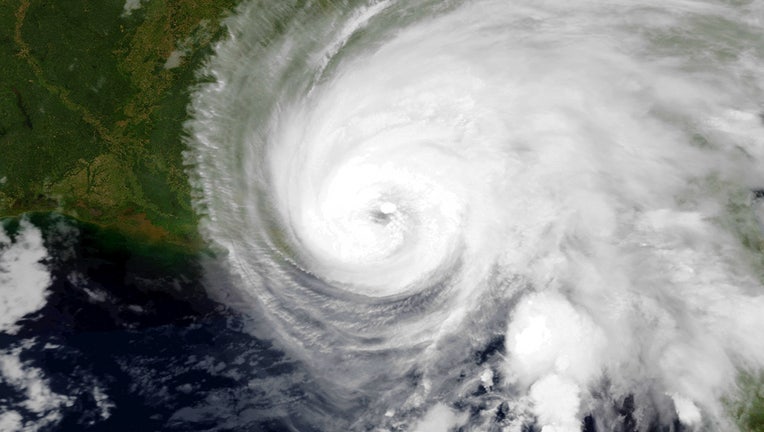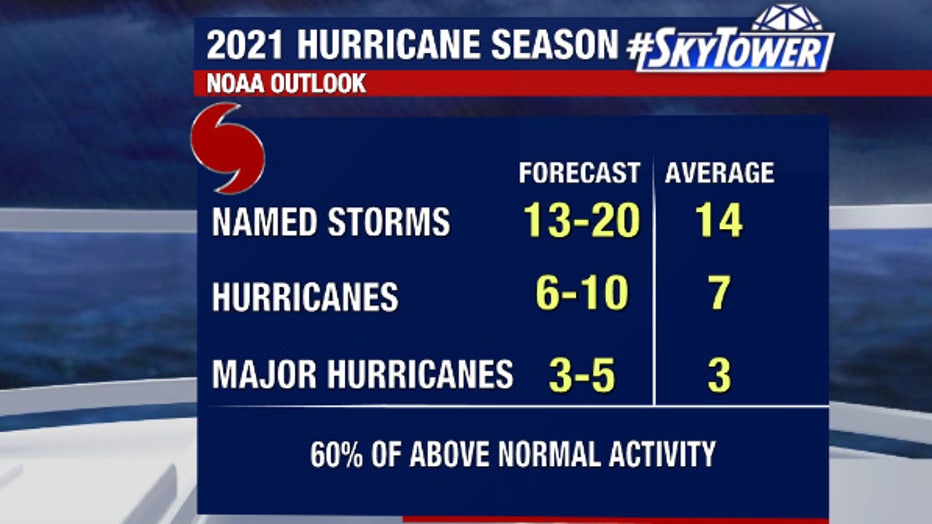NOAA expects above-average hurricane season in 2021

The MODIS instrument aboard NASA's Terra satellite captured this infrared image of Hurricane Sally on September 16, 2020 (NASA - EOSDIS Worldview)
TAMPA, Fla. - The 2021 hurricane season will be another busy one, according to forecasters at the National Oceanic and Atmospheric Administration, but probably not quite as busy as last year’s record-shattering season.
In the 2021 outlook released today, NOAA’s forecasters predicted a 60% chance of an above-normal season, a 30% chance of a near-normal season, and only a 10% chance of a below-normal season.
They say that breaks down to a likely range of 13 to 20 named storms – meaning tropical storms with winds of 39 mph or higher – of which six to 10 could become hurricanes, including three to five major hurricanes.
"Contributing factors include warmer than normal sea-surface temperatures, weaker trade winds, and lower wind shear. A neutral phase of the El Nino Southern Oscillation is likely through the season, however it’s possible we transition back to a weak La Nina later in the year, which also aids in tropical development," offered FOX 13 meteorologist Tyler Eliasen. "Additionally, an enhanced African monsoon season should lead to increased tropical development in the main development region of the Central Atlantic toward the peak of the season."
BLOG: Tyler breaks down the NOAA forecast

Last year, NOAA also predicted an above-average season, citing conditions similar to what’s expected this year. And the 2020 Atlantic hurricane season ended up not just breaking the record for the number of storms, but shattering it.
For only the second time, forecasters ran out of names and had to start using Greek letters, and they went further into the Greek alphabet than ever before.
That won’t happen this year – not because of anything to do with the number of storms, but because forecasters have abandoned that practice and will instead draw from a list of standby names, if necessary.
RELATED: NOAA testing new drone technology to hunt hurricanes
While the Atlantic hurricane season officially runs from June 1 through November 30, but storms have spun up early each of the last six years, and it looks like Subtropical Storm Ana may form in the next few days.
2020: Tropical Storm Arthur formed on May 17
2019: Subtropical Storm Andrea formed on May 20
2018: Subtropical Storm Alberto formed on May 25
2017: Tropical Storm Arlene formed on April 19
2016: Hurricane Alex formed on January 12
2015: Tropical Storm Ana formed on May 8
The number of storms per season is notable, but more important is the number of landfalling storms – which NOAA does not predict – and, of course, the locations of those landfalling storms.
"At the end of the day, it’s important to remember you should prepare for hurricane season in the exact same way every year, regardless of what the seasonal outlook says," Eliasen added. "All it takes is one storm where you live to make it a bad year for you."

